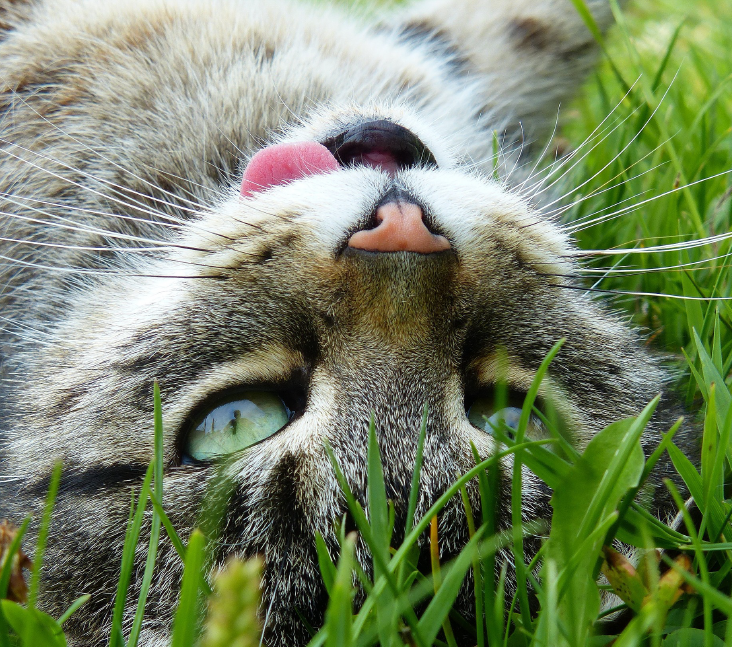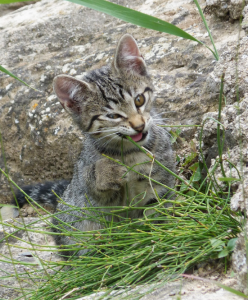Cat Safe Cat Gardens

 Although cats are predominantly carnivores, most felines fancy a side of greens with their protein. As cat guardians can attest, their pets have a particular propensity for ingesting the leaves of indoor houseplants and gorging on grass when outdoors.
Although cats are predominantly carnivores, most felines fancy a side of greens with their protein. As cat guardians can attest, their pets have a particular propensity for ingesting the leaves of indoor houseplants and gorging on grass when outdoors.
While researchers may not agree on the reason behind this kitty cat craving, they have proposed several theories. Some believe cats require certain enzymes and/or nutrients found in greenery. Others surmise that the fiber content in green grass possesses “stomach cleansing” properties and helps a cat’s digestive process by promoting the passage of “hairballs” through stools or vomiting. Still others maintain that some cats simply LIKE the taste and texture of crispy green leaves and crunchy green stems.
 Because outdoor cats have more than ample opportunity to indulge in all things green and growing, pet guardians must take added precautions when using fertilizers and weed and pest control products on their lawns as they can prove highly toxic to cats.
Because outdoor cats have more than ample opportunity to indulge in all things green and growing, pet guardians must take added precautions when using fertilizers and weed and pest control products on their lawns as they can prove highly toxic to cats.
To keep indoor kitties safe from indiscriminate snacking, the ideal solution is to create the purr-fect “pussycat garden” for them. The simplest method is to place a few pots of fresh cat grass throughout your home. Although cat grass is easily available through most seed companies and pet supply catalogs, it can also be found growing and pre-potted at many pet stores. To add variety to the mix, consider such feline-friendly grasses as alfalfa sprouts, bluegrass, Japanese barnyard millet, oats, rye, ryegrass and wheat.
For those with more ambition and an accomplished green thumb, why not construct your own, homemade “salad bar”? Start by placing a two-inch thick layer of potting soil in the bottom of one or more pots or planters. Add just enough water to moisten the soil and cover it completely with a thin layer of seeds. Lightly cover the seeds with a handful of soil and then loosely cover each pot or planter with plastic wrap, thereby creating a “greenhouse” effect. After three or four days, the seeds will have sprouted, and you can safely remove the plastic wrap. As the grass grows, water it as needed to keep the soil moist (NOT soggy), and mist it daily with a spray bottle. Once the grass reaches a height of two inches, place the pots or planters wherever it’s most convenient for your cat to safely and contentedly “graze”.
Grass can induce vomiting in some cats, and if yours is prone to vomiting, keep her away from her “garden” immediately following a meal. If she continues to vomit after eating the grass, consult your veterinarian before allowing her to have more.
